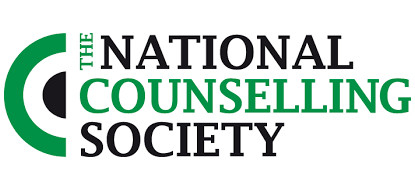Lying is a topic that has risen in prominence as ordinary people try to figure out who to trust in their political leaders and scientific experts. You hear commentary on “The Big Lie” referring to the claim by Republicans that the 2020 U.S. presidential election was rigged. You probably also hear a considerable amount of debate regarding the COVID-19 vaccine. According to coronavirus conspiracy theories, there are claims that the vaccine might actually change your DNA, allow the government to track you, or just plain not work.
Closer to home, you may have people in your life who ascribe to these beliefs, or you may feel confused yourself about whether they have any validity. Apart from these potential “mega” lies, there can also be far smaller but still insidious lies that your friends, relatives, or coworkers seem to be guilty of committing. You hear excuses that you’re not sure to believe, claims that appear to be a bit of a stretch, and even gossip about others that seems both cruel and outlandish. A friend tells you that another friend is having an affair. But you know this friend well enough to take the news with a grain of salt. Or should you? Maybe you’ve missed some obvious cues that your potentially cheating friend isn’t as trustworthy as you thought. A New Theory of Deception
According to Louisiana Tech University’s Jeffrey Walczak and Natalie Cockrell (2021), when researchers put deception under the microscope in lab settings, they typically define the behavior of lying as “intentionally erring and the inhibition of truth” (p. 1). For example, a participant chooses a set of 5 out of 10 pictures and either lies or tells the truth when prompted to answer whether they have a picture or not. This intentional type of deception, responding incorrectly, doesn’t include what may happen in real life when people try to use what they know about their targets as the basis for a fabrication. For example, what that gossiper telling you about the friend’s partner isn’t just “incorrect,” but is in fact an attempt to manipulate you into believing something bad about this person as a mean and jealous ploy.
The theory of deception that the Louisiana Tech researchers test is intended to account both for intentional errors (such as the pictures) and “purposely inducing false beliefs in others to achieve social goals” (p. 1) (i.e., the gossiper).
The ADCAT model, as described by Walczak and Cockrell, stands for “Activation-Decision-Construction-Action Theory.” Rather than just accounting for what you might consider a lazy lie such as intentionally providing a wrong answer, ADCAT explains what happens when people lie in “high stakes” social contexts. Here, by telling a lie, the deceiver avoids admitting the truth in order to avoid significant negative consequences. Examples of these high stakes lies include making something up on a job interview to conceal some ugly truth from the past. Another might be making a false excuse to a romantic partner to cover up bad behavior such as having a one-night fling or spending too much money on a little gift for oneself. The Four Components of Deception Taking apart the pieces of ADCAT, the Louisiana Tech researchers describe each as follows: Activation:
When you’re asked to provide information, such as the details of a certain night by your partner, you first have to retrieve that information from your long-term memory. If you think that this information might be incriminating then you have to take the extra step of leaving out the details or just making something up that sounds plausible and won’t get you in trouble. Maybe on a job interview, you’re asked about a period of time not listed on your resume. Now you have to think of some reason other than what you guess the interviewer might think is a problem, such as having taken a few years off just to travel. The added “cognitive load” means that you won’t respond automatically but instead might take a minute or two to figure out what to say.
Decision:
At this point, having conjured up your cover-up, you have to choose whether or not to use this in your answer to the interviewer’s question. How much will you lose by admitting that you just wanted to bum around for a while without any responsibilities? Or could telling the truth make you appear to have a fun, adventurous side? According to ADCAT, if the cost of honesty is higher than the reward, you will lie. You’ll give some other reason, such as having to care for a sick relative. In part, though, you’re also trying to judge how the interviewer will react. “Potential lies judged to be implausible to targets will be strongly inhibited” notes the LA Tech research team.
Construction:
According to the “plausibility principle,” if you decide to lie, you’ll modify the truth according to what you think the other person will believe, attempting to have it to conform to some established social norm. Caring for an ill relative is consistent with cultural expectations. If you don’t think you can pull this off, though, you’ll scramble your lie together from bits and pieces of information about your past and what you know about caregiving. Again, this takes time. Therefore if you know you’ll have some explaining to do, you might prepare your lie ahead of time, so your response will be quick and convincing. However, one little probing question, and all bets are off, as you'll see shortly.
Action:
Now that your lie is ready to go, you have to figure out what demeanor to put on so that the words will have their intended effect. Most people believe that liars seem stiff, shifty, and uncomfortable, so they’ll try to appear relaxed when coming up with their falsehoods. The risk is that they “self-regulate too much," according to the authors, causing others to regard them with suspicion. Putting ADCAT to the Test
To test the utility of ADCAT in analyzing people’s behavior while lying in the lab, Walczyk and Cockrell recruited 81 undergraduate participants for an experiment in which they instructed the students to provide truthful or deceptive answers based on a combination of factual and autobiographical information. The researchers created three conditions varying in the instructions to be truthful or deceptive. You can get an idea of what participants experienced in this study by putting yourself in their place under these conditions:
Truthful:
Participants responded to the instruction to respond “quickly and truthfully” to questions such as:
- Is the shape of the Earth a square?
- Are pigs a type of bird?
- Are you currently a college student?
- How many hours are in the day?
Intentional erring:
Read each question one word at a time. When you get to the end of the question, give an answer that is intentionally incorrect:
- Are apples a type of meat?
- Does gravity pull us toward Earth?
- How many tails do most dogs have?
- Do lightbulbs run on electricity?
Lie plausibly:
When you get to the last word of a question, imagine you are communicating with another adult who does not know the truth and you wish to deceive by answering with a plausible deception:
- Do cows lay eggs?
- What is the name of a common type of fruit?
- Do you have a belly button?
- Is California part of the United States?
What type of lies did you come up with in those last two conditions? How long did it take you to come up with your responses? The research team used time taken to respond and compliance with instructions as the key outcome variables of the study.
As the authors predicted, the response time of participants corresponded to ADCAT because they took longest in the plausible lie condition, particularly when the questions weren’t just yes or no. Importantly, relative to previous studies, participants also took longer in the intentional erring condition than the truth-telling condition, but not as long as did participants in the plausible lie condition.
In trying to lie when you answered these questions, did you also notice that it was not that easy to come up with a falsehood of either type? How would you lie to the question “I have a belly button?” Is there any type of condition in which this answer could be a "no"? What might that be? Indeed, in looking at compliance data from the participants, the research team noted that people actually couldn’t always follow the direction to lie when the lie would be this blatant.
How to Use ADCAT in your own Deception Detection
Turning now to the ways that you could use the ADCAT model in your own truth-telling experiments, the findings suggest that you pay careful attention to how long it takes for the other person to come up with an answer, especially to what should be a straightforward question. You can also think for yourself about what might motivate someone to lie. If it’s a lie that’s volunteered (such as a piece of gossip), be prepared to ask detailed follow-up questions, especially ones that aren’t just a simple yes or no. This will force the person to come up with more lies that veer further and further from the truth while also becoming increasingly inconsistent.
As you get the person’s answer, see whether they’re trying to read your reaction. In a case as emotionally-laden and potentially significant as the infidelity of a friend, don’t let your face show a strong reaction as that will give the perpetrator more cues to help guide answers to those questions. A clear implication of ADCAT is that liars use what’s called “Theory of Mind” to try to discern how to wind their way through the supposed “facts” they provide. Reading a potential liar's body language can also be helpful, especially if they seem to be trying too hard to look relaxed.
To sum up, sniffing out deception is always a challenging task. You’ll achieve greater success by getting into the mental processes of those who try to pull you into their version of the truth.











